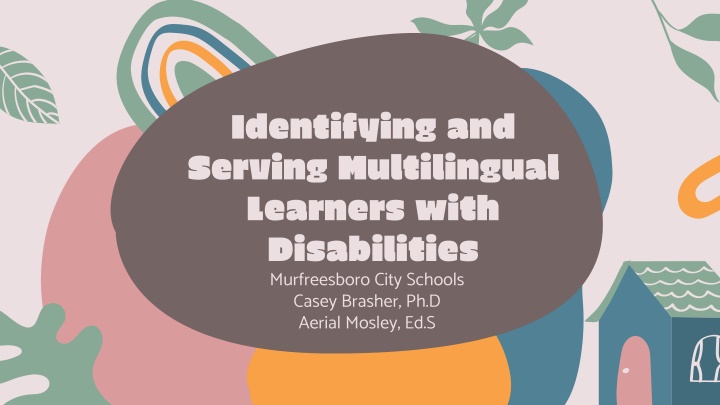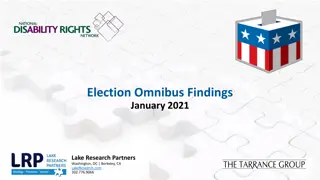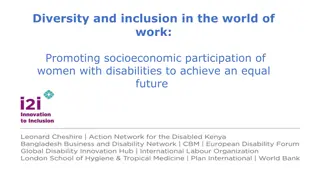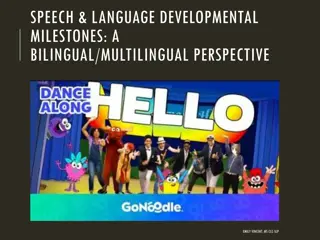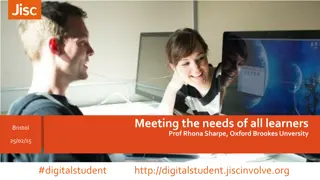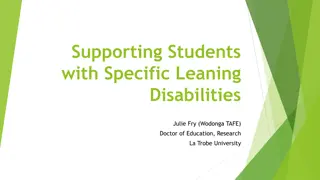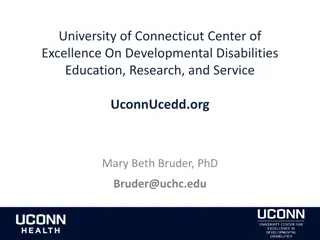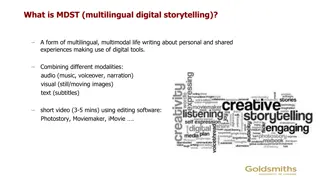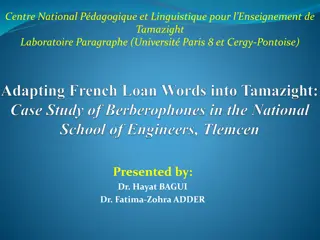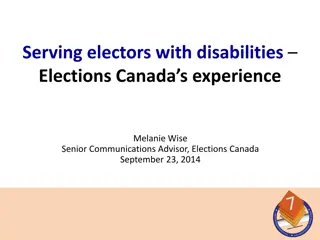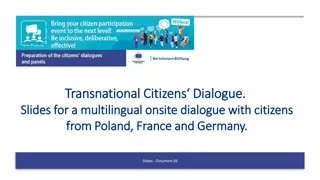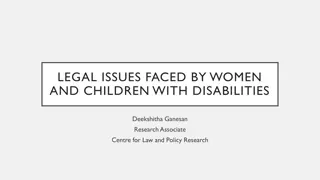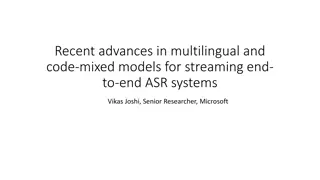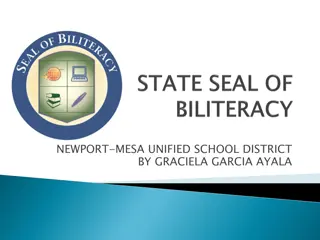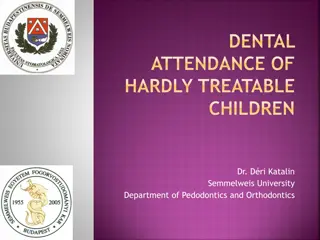Identifying and Serving Multilingual Learners with Disabilities
In this presentation, experts discuss procedures for identifying language differences and disabilities in multilingual learners. Practical strategies for educators in general and special education settings are covered, along with considerations for evaluating multilingual learners for educational disabilities. The presenters Casey Brasher, Ph.D., and Aerial Mosley, Ed.S., bring years of experience in school psychology, literacy studies, dyslexia, and English language development. The bilingual difference between monolingual English speakers and bilingual learners is explored, highlighting the challenges and opportunities faced by multilingual students.
Download Presentation

Please find below an Image/Link to download the presentation.
The content on the website is provided AS IS for your information and personal use only. It may not be sold, licensed, or shared on other websites without obtaining consent from the author.If you encounter any issues during the download, it is possible that the publisher has removed the file from their server.
You are allowed to download the files provided on this website for personal or commercial use, subject to the condition that they are used lawfully. All files are the property of their respective owners.
The content on the website is provided AS IS for your information and personal use only. It may not be sold, licensed, or shared on other websites without obtaining consent from the author.
E N D
Presentation Transcript
Identifying and Serving Multilingual Learners with Disabilities Murfreesboro City Schools Casey Brasher, Ph.D Aerial Mosley, Ed.S
OBJECTIVES 1 3 2 Discuss practical and consistent procedures for identifying language differences and disability in multilingual learners. Help educators select appropriate and effective teaching and learning strategies in general education and special education settings. Discuss considerations for evaluating multilingual learners for educational disabilities.
A little about the presenters Casey Brasher, Ph.D School Psychologist for 15 years Ph.D. in Literacy Studies -Specialization: Dyslexia & Reading Disabilities Adjunct instructor in the Elementary and Special Education Department at Middle Tennessee State University Dyslexia Assessment Specialist at the TN Center for the Treatment and Study of Dyslexia (2011-2016)
A little about the presenters Aerial Mosley, Ed.S Murfreesboro City Schools ELD District Specialist/Coach Ed.S in Curriculum and Instruction English Language Development Teacher for 13 years Taught in Dual Language & Arts School in Texas
01. The Process
The Bilingual Difference Monolingual English Speakers Bilingual Learners Exposed to English exclusively in the home, school, and environment. Hear and use multiple languages in various environments. Only one language in the neuro-cognitive processing. Use both languages when listening, reading, and planning speech in either language. Can speak and understand the language in which they are learning to read. Are learning to read in a language they are simultaneously still learning to speak and understand. Can understand classroom instructional and management language. Are learning to interpret teacher management and instructional language as well as learn to hear sounds in words to decode, understand and read English fluently. Reading programs and assessments have been developed and normed on monolingual English speakers. Reading programs and assessments were not normed on bilingual learners and often underestimate their abilities.
Identifying Multilingual Learners MTSS/RTI + Multilingual Learner Guidance Document
Considerations Language of Instruction Proficiency level in language of instruction Culturally responsive practices Grouping Modeling Bridge background experience to curriculum Developmental Background Medical concerns Developmental milestones Trauma 01 Prior Schooling Culture Family structure Student s Responsibilities in the home Beliefs about education 02 Previous schooling experiences Instructional model (dual, primary language, English immersion, etc.) 3
02. Collaborating
PROBLEM SOLVING Process for determining what additional supports/accommodations/interventions should be implemented in general education for the student and classroom teacher. Supporting the classroom teacher with ELD strategies Identifying and supporting the student in the specific language domain(s) Collaborating with other specialists (behavioral, speech, vision, etc.) Progress monitoring
COLLABORATION WITH STAKEHOLDERS *Emphasize problem solving with team members in a team format Look outside the child Does the instructional environment support the student s cultural and linguistic needs? What accommodations have been successful? Has student been able to access intensive general education supports? What do they look like? How many years of direct English language development instruction? Was it research-based? Has effective differentiation occurred in instructional settings?
03. Evaluation
Special Education Evaluation Under the Individuals with Disabilities Education Act (IDEA), the school system must evaluate a student when a disability is suspected, regardless of their status as a multilingual learner. We must not delay evaluations because of the student s language status. At the same time, we must ensure that we are not identifying a disability because of limited English language proficiency.
Special Education Evaluation What disability is suspected? What services/needs are evident? What methods/tests are appropriate to measure the student s abilities? What other factors should be explored? Previous educational experiences Language assessments Parent input Medical or environmental history Teacher input
Special Education Evaluation 13 federal categories of disabilities Majority of states under-identify ML students for disabilities (identification rate of 8% or lower). TN has a 2% identification rate. There is a myth/misconception that we should not refer ML students to special education. Disability rates should be comparable to the general population.
Special Education Evaluation Specific Learning Disability (SLD) Identification of multilingual students for SLD in 33 states were far greater than the national average, including TN. 50% of ML students with a disability in TN are under SLD eligibility. Different state policies and procedures contribute to a wide range in identification rates.
Special Education Evaluation Considerations for determining a disability versus a language difference Consider progress in relation to the progress of similar peers Use resources to screen, assess, and monitor the progress of academic language development (CALP) Review guiding questions/considerations https://www.mnase.org/uploads/4/7/7/9/47793163/el_referral_ guiding_questions.pdf
Indicators of Possible Disability Consistent confusion with verbal directions in L1 and L2. Often forgets or needs further explanation in L1 and L2 Consistently takes longer to respond in L1 and L2 and it does not change over time Comprehension/Listening
Indicators of Possible Disability Doesn t remember letter sounds after initial and follow-up instruction (even if they are common between L1 and L2) Makes letter substitutions when decoding not related to L1; cannot remember vowel sounds; difficulty blending the sounds to decode the whole word Consistently confuses letters/words that look alike Phonemic Awareness
Indicators of Possible Disability Difficulty memorizing math facts from one day to the next and requires manipulatives to complete math problems Often forgets the steps required to complete problems from one day to the next Does not understand how to process the problem or identify key terms in L1 or L2. Mathematics
REFERENCES Butterfield, J. (2014). Meeting the needs of English learners with disabilities. Resource Book. Goleta, CA: Santa Barbara County Special Education Local Plan Area (SELPA). Retrieved from http://www.sbcselpa.org/wp- content/uploads/2014/06/EL- Resource-Book-Revised-6-14.pdf. Poudre School District Integrated Services Department (n.d.). Guiding questions for English language development students. Available at www.tinyurl.com/WIDAsped Differences Impacting Literacy Development Between Monolingual English Learners and Bilingual Learners. Dr. Kathy Escamilla https://v5e685.p3cdn1.secureserver.net/wp-content/uploads/2022/09/21025- NCEL-Monolingual-vs-Bilingual-Speakers-FINAL.pdf
THANKS! DO YOU HAVE ANY QUESTIONS? casey.brasher@cityschools.net aerial.mosley@cityschools.net CREDITS: This presentation template was created by Slidesgo, including icons by Flaticon and infographics & images by Freepik
